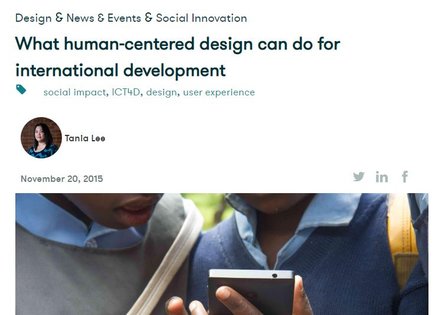
A human-centered design process is a critical step that is often overlooked when making important decisions in technology for development.
In the development space, funding usually comes from a donor or an agency, and the service or products it benefits goes to a different place, local communities in need around the world. The indirect link between the donors and the beneficiaries can lead to a lack of accountability—as Dave Algoso explains in his blog on Reboot.org.
But practicing human-centered design, or user-centered design, which puts the needs, wants and limitations of users first in each stage of the design process, can help ensure that the services and products actually meet the needs of the end users—the communities we seek to empower and serve.